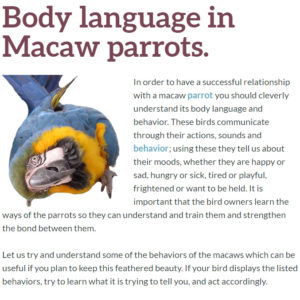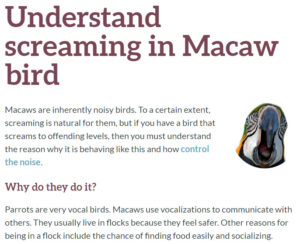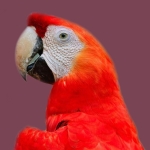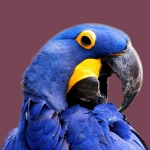Macaws are incredibly beautiful members of the parrot family. They make fascinating and entertaining pets! If you’re considering making a macaw part of your life, you should be familiar with this unique bird’s basic anatomy. You’ll know what to look for in a well-cared-for, healthy bird.
Macaws average about 32 inches in length, but most of this brightly colored bird’s length is actually taken up by incredibly beautiful plumage that falls behind him. A healthy macaw should weigh about 2.2 pounds. Plumage on a healthy, well-fed macaw should be full and glossy and clean. You’ll note that the bird has three “fingers” that face forward. They can squeeze down on treats and toys to pick them up with the use of the fourth claw that comes underneath rather like a fork. It is necessary to keep your pet macaw’s nails clipped.
A macaw’s face is covered by areas of white skin on each side. Within this skinned area are the ever expressive eyes of this curious bird. When macaws are young, their eyes are dark. As they age, the eye become more golden yellow.Pet macaws use their eyes frequently to express interest or to respond when being talked to.
The beak or the mouth of this delicately lovely bird is not to be taken lightly. Macaws can use their mandibles to crack open nuts and to chew through wood. Macaws have extremely strong beaks. The bottom part of the mandible is black, wide and shorter than the whitish(or dark) hook that is your pet’s top bite.
Read More:
3 in depth articles about Macaws!
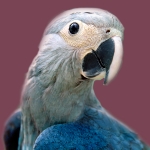 Spix Macaw Spix Macaw |

